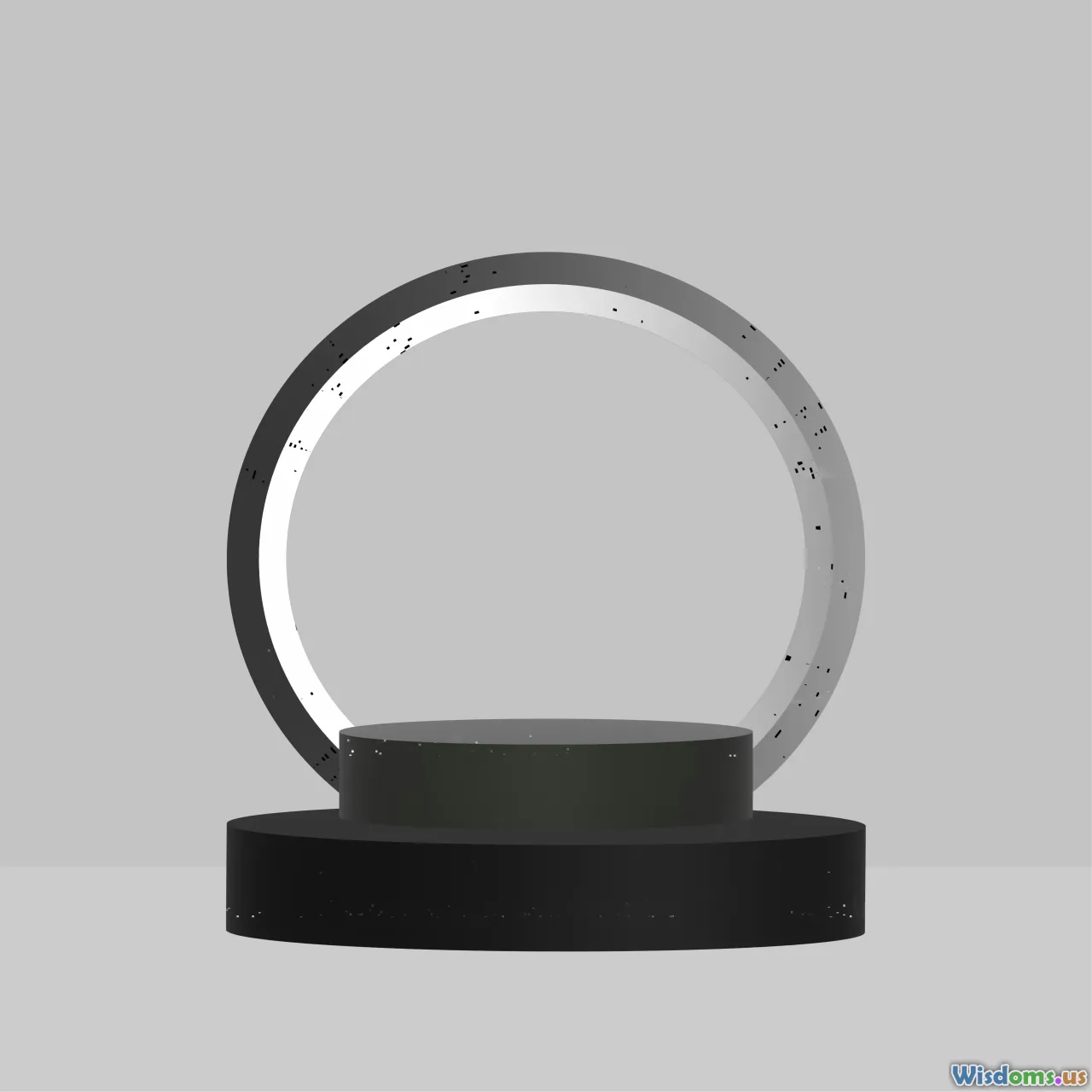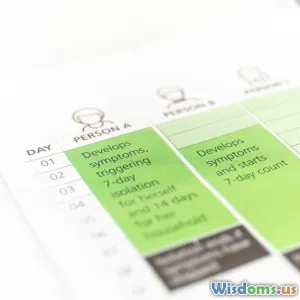
Are You Sabotaging Your Blog With Poor Opening Lines
15 min read Explore how weak opening lines can hurt your blog's performance and discover practical tips to captivate readers from the very first sentence. (0 Reviews)
Are You Sabotaging Your Blog With Poor Opening Lines?
You carefully research your topic, carve out precious time to write, and meticulously edit your post—only to watch readers bounce away within seconds. What went wrong? Chances are, your opening lines didn't give them a good reason to stay.
First impressions matter more in blogging than we’d like to admit. Readers are inundated with content, and with an average attention span shorter than ever, your post’s survival hinges on a gripping start. If your opening lines are dry, vague, or lack connection, you're unintentionally sabotaging your blog's potential.
Let’s explore why weak opening lines hurt your blog—and how to craft introductions that spark curiosity, build trust, and keep readers scrolling.
The High Cost of a Lackluster First Impression

Imagine entering a party where the host barely acknowledges you. Do you stick around, or start glancing at the door? Your blog readers respond similarly to uninspired opening lines—they leave. According to Chartbeat, 55% of online visitors spend less than 15 seconds on a webpage. The critical factor in those first seconds? Your introduction.
A weak opening—a generic statement, an overused question, or bloated exposition—signals that your content is skippable. SEO experts point out that high bounce rates often trace back to disappointing intros: Google tracks user engagement, and lackluster openings can indirectly damage your post’s search rankings.
Example: The "So What?" Effect
Consider these two openings for a post about time management:
- "Time management is important for everyone." (Generic, weak)
- "Ever feel like your day disappears before you’ve even crossed off one item from your to-do list?" (Curiosity-piquing, relatable)
In just one sentence, the second version builds rapport and promises value, instantly compelling the reader to continue.
Common Ways Bloggers Undermine Their Opening Lines

Most bloggers don’t intentionally bore readers. Instead, these missteps creep in:
- Stating the Obvious: Beginning with safe, predictable statements like “In today’s world, technology is everywhere.”
- Excessive Backstory: Often, authors take too long to get to the relevance or main point.
- Empty Questions & Clichés: Openings like “Have you ever wondered…?” quickly lose impact due to overuse.
- Keyword Stuffing: Trying to shoehorn SEO phrases for rankings, not engagement.
- Vague Promises: Starting with “This article will cover everything you need to know about fitness.” (How is it unique or valuable?)
Pro Tip: Read your introduction and ask, Would this excite me if I saw it on someone else’s blog? If not, rework.
Cracking the Code of Compelling Openings

A truly effective blog opening does more than state the topic—it sparks curiosity, draws out emotion, and asserts authority. Here’s how to master the art:
1. Use Vivid Storytelling
Start with a brief anecdote or scenario. Humans are wired for stories; even short narratives create immediate engagement.
Example:
When Anna checked her blog stats, her face fell: barely anyone made it past the intro. She began to wonder—was her writing really that boring?
This intro personalizes the issue, raises stakes, and beckons readers to empathize.
2. Drop a Surprising Fact or Statistic
An unexpected figure or revelation sets the tone and grabs attention.
Example:
Did you know the average online reader forms an opinion about your article in just eight seconds?
3. Paint a Picture – Relatable and Visual
Help your reader “see” themselves in the setting or feel the emotion.
Example:
Your coffee is still steaming, the cursor flashes at the top of the page—and yet, the hardest words to write are those first few lines.
4. Start With a Provocative Statement
A bold claim or question can challenge assumptions and intrigue visitors.
Example:
Most blog introductions are a waste of digital ink—don’t let yours be one of them.
5. Preview the Value—But Be Specific
Instead of overpromising, tease the precise insights or takeaways your reader will gain.
Example:
By the time you finish this guide, you'll have three actionable ways to captivate any reader from sentence one.
Why Readers Judge So Quickly: The Psychology Behind it

Science explains why first lines matter. The primacy effect—the tendency to remember the first items in a sequence—applies to online content. Your introduction shapes expectations and determines if the reader invests further attention.
Neurologically, when something feels relevant or surprising, the brain releases dopamine, enhancing motivation. A well-crafted opening can literally trigger a chemical boost, making continued reading feel rewarding.
Further, research by Nielsen Norman Group found users rarely read Web pages word by word: they scan. Strong, punchy opening lines quickly communicate, "You’re in the right place—keep going."
Real-World Examples: Poor vs. Powerful Opens

The Weak Start
"Traveling has always been a popular topic. In this post, we’ll discuss travel tips."
This intro lacks originality, emotional connection, and fails to hint at specific value.
The Strong Start
"From missed flights to magical sunsets—travel taught me more lessons than school ever could. Here are five that saved my wallet (and sanity) on the road."
Here, we see emotion, specificity, and a promise that’s both personal and beneficial.
Another Example: Food Blog
- Weak: "Healthy eating is important. Here are some recipes."
- Strong: "Imagine turning your guilty-pleasure snacks into meals your body craves. Here are three chef-tested recipes that balance flavor and health—without sacrificing either."
Actionable Advice: How to Level Up Your Introductions

-
Write Your Introduction Last: After finishing your post, revisit the intro with perfect clarity on your content and its best hooks. Often, the most compelling intro emerges after the core points are in place.
-
Embrace Editing: Aim for brevity and weight. Remove fluff words. Replace generalities with vivid specifics.
-
Test With Real Readers: Ask a friend, "After this first paragraph, would you keep reading?" Honest feedback is gold.
-
Lead With Relevance: Explicitly connect where your reader is (their pain, curiosity, or goal) with what the post offers.
-
Review Opening Sentence Formulas—but Remix Them: Don’t demand originality every time. Instead, make tried-and-true angles your own. For instance:
- "Picture this…" (Paint a scenario).
- "You might be surprised to learn…" (Show surprising fact).
- "The truth is…" (Build authority and trust).
-
Start With the Strongest Point, Not the Safest: If you can offer instant insight or a "quick win," spill it up front to hook the reader.
-
Remove Technical Jargon (Unless Your Audience Expects It): A wall of complex terms drives even interested readers away.
Balancing SEO With Reader Engagement

Many bloggers fear that creative intros will compromise their SEO. But the truth: SEO and engaging writing can (and should) work together.
- Place primary keywords toward the front of the post—but embed them naturally within an interesting context.
- Write for humans first: If your intro appeals to real people, dwell time increases, signaling quality to search engines.
- Use secondary keywords and related phrases as you creatively expand the introduction and throughout the post.
Engaged, curious visitors are likelier to share and link to your content—boosting SEO with every paragraph they read.
Learning from the Pros: Brands and Bloggers Who Nail It

Study successful platforms like HubSpot, Backlinko, and Copyblogger: Notice how their intros break from "template talk" to launch straight into empathy, insight, or surprise.
For example, Backlinko founder Brian Dean opens guide posts with data-driven statements blended into direct, sometimes punchy language—instantly asserting authority and value.
Or look at the lifestyle blog A Cup of Jo, known for gentle storytelling intros. In one post about friendship, the writer starts:
"It started in a stairwell—one lunch, and suddenly we were skipping Spanish class, telling secrets over milkshakes."
These intros work because they:
- Directly tap into human emotion or a universal moment.
- Start the story with concrete details rather than generic scenes.
- Align immediately with what the reader cares about.
Transform Your Openings: A How-To Rewrite Exercise

Try this practical technique:
-
Draft a Quick, Safe Introduction:
- Write the typical first line you’d use on your next blog post.
-
Rewrite It Four Ways:
-
- As a story or image
-
- As a shocking statistic
-
- As an unexpected question
-
- As a bold statement
-
-
Compare for Impact:
- Read all versions aloud. Which one excites or intrigues you most? Choose and tweak for tone and audience.
Example Exercise: Topic: The Importance of Sleep
- Safe: "Getting enough sleep is vital for good health."
- Story: "Sarah's third coffee hadn’t helped. It was only after a double all-nighter at work that she realized why her creativity and patience had vanished."
- Statistic: "Missing just one night of sleep can cut your brain’s ability to form memories by almost 40%."
- Question: "Ever felt like you’re in a mental fog after pulling a late night?"
- Bold statement: "Most of us treat sleep like it’s optional—but it powers every smart decision we make."
Don’t Let Your Openings Undercut Your Hard Work

You work too hard on your blog posts to let a weak opener lose the battle in the first line. Shifting your mindset—from "must state the topic" to "must spark interest"—is the biggest improvement you can make to your blog today.
Every strong introduction is a promise: that the words to follow will be worth the reader’s time. Make yours compelling, and you not only keep visitors on the page—you earn loyal fans for every new post you share.
So as you sit down to write that next opening sentence, remember: it’s your handshake, your shop window, and your single best shot at turning a casual clicker into an engaged reader. Don’t waste it—make those lines work as hard as the rest of your content.
Rate the Post
User Reviews
Other posts in Blogging & Article Writing
Popular Posts















